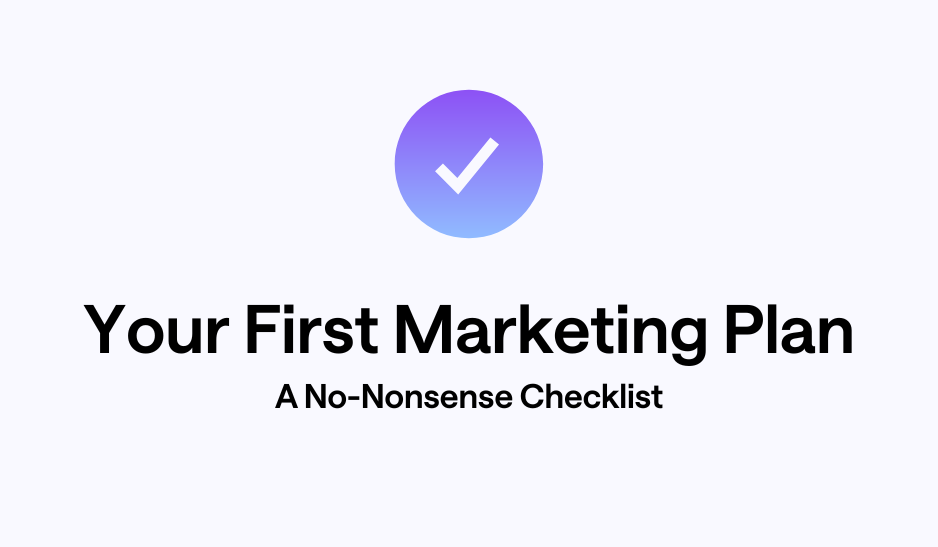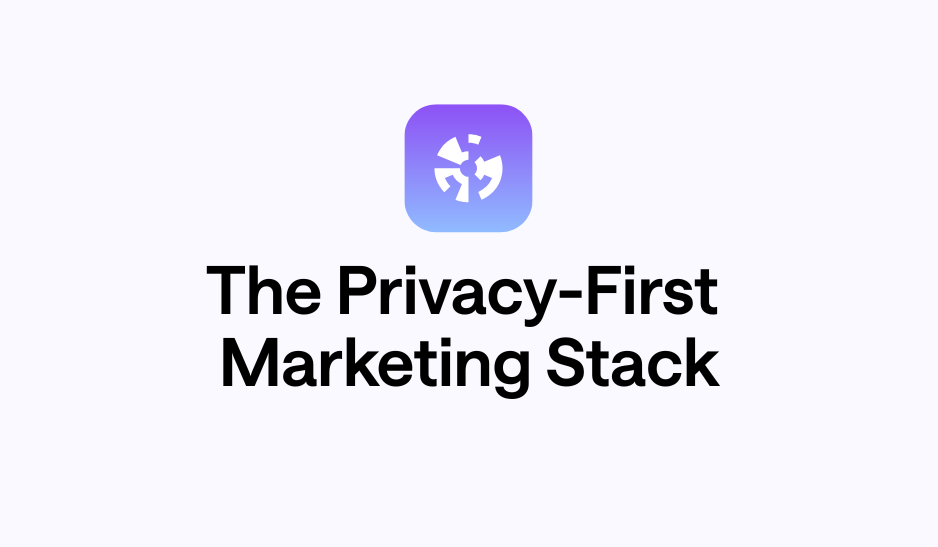How to Generate a Marketing Plan (Without Learning Marketing)
You’ve built it. The final line of code has been committed, the tests are all green, and the product you’ve spent countless nights architecting is now a functional reality. It is an elegant solution to a complex problem.
So, you ship it. And you wait for the world to notice.
This is the moment of truth for most technical founders. It’s the jarring transition from the predictable, logical world of engineering to the ambiguous, often frustrating world of the market. The skills that made you a brilliant builder—systems thinking, logic, a relentless focus on the product—suddenly feel inadequate. Now, you’re told you need a “go-to-market strategy,” a “brand narrative,” and “customer personas.”
It feels like being asked to learn an entirely new profession overnight.
Your first instinct might be to treat marketing as another technical problem. You read a few articles, watch some tutorials, and try to reverse-engineer what other companies are doing. But it’s a rabbit hole. Soon you’re drowning in a sea of acronyms (CAC, LTV, SEO, SEM) and abstract concepts that feel worlds away from writing clean code or designing a scalable system.
The alternative options aren't much better. Hiring a marketing agency is a significant cash burn, and they often struggle to grasp the nuance of a technical product. Finding a senior marketing hire is a long, expensive search, a high-stakes bet when you’re still trying to find product-market fit.
The result is strategic paralysis. Founders get stuck, defaulting to either tinkering with the product endlessly or half-heartedly trying tactics they read about online. The product is brilliant, but the business never achieves escape velocity.
But what if you could approach your marketing strategy with the same efficiency and intelligence you used to build your product?
The answer isn't to become a marketer. It's to automate the work of one.
Demystifying the Process: What Is a Go-to-Market Plan, Really?
Before you can automate a system, you have to understand its logic. A go-to-market (GTM) strategy isn't the mystical art form it’s often made out to be. It’s a structured framework for answering four fundamental questions. For a logical mind, it’s helpful to think of it not as a creative exercise, but as a set of required parameters for your business to function.
1. Your Position: Where Do You Fit in the Market? This is the foundational layer. It’s about defining your company’s unique identity and its relationship to the rest of the ecosystem. It sets the ground rules for everything that follows.
-
Brand Essence & Archetype: What is the one core promise you make to your users? And what is the personality of your company? This isn't just branding fluff; it’s a system for ensuring tonal consistency in all your communication.
-
Competitive Landscape: Who else is solving this problem? How is your approach fundamentally superior or different? Understanding this prevents you from being just another commodity in a crowded market.
.png?width=3200&height=2400&name=In%20Post%20Blog%20Images%20(49).png)
2. Your Customer: Who, Specifically, Are You Building For? You can't build a user-centric product without a clear picture of the user. In business, this is your customer persona. A vague description like “SaaS companies” or “developers” is a recipe for wasted effort; it leads nowhere. You need a detailed profile.
-
Demographics & Work: The basic identifiers. What is their job title? What size company do they work at? Where are they located?
-
Psychographics: This is the critical part. What are their deep-seated goals and motivations? What are the frustrating obstacles and inefficient workflows they face every day? What does a “win” look like for them? This is where you find the pain that your product solves.
-
Watering Holes: Where do they get their information? What newsletters do they read, what forums (like Hacker News or specific subreddits) do they frequent, what influencers do they follow?
3. The Opportunity: What Is the Scale of the Market? Investors, potential hires, and you yourself need to understand the economic potential of the problem you’re solving. This requires quantifying the market.
-
Total Addressable Market (TAM): What is the total global demand for a solution like yours?
-
Serviceable Available Market (SAM): Which part of that market do you actually serve with your specific product and business model?
-
Serviceable Obtainable Market (SOM): What is the realistic portion of that market you can capture in the next few years? This is your initial target.
4. The Narrative: How Do You Tell Your Story? This is where you synthesize all the above into a clear, compelling narrative. It's the story you tell the world about your business. It needs to be logical, persuasive, and easy to understand. This story becomes the source material for your investor pitch deck, your website copy, and your sales outreach.
.png?width=3200&height=2400&name=In%20Post%20Blog%20Images%20(39).png)
Traditionally, answering these questions is a manual, time-consuming process involving weeks of research, surveys, and workshops. For a founder, that’s time not spent on the product.
From URL to Strategy: The Automation Layer
Vibe Coding is popular for a reason, and marketing has caught on. Introducing Vibe Marketing.
This is the principle behind Cambium AI. We built it because we believe a founder’s time is best spent building, not becoming a junior market analyst. Our platform acts as an AI-powered strategist that uses the single greatest source of truth about your product—its own website—to generate your entire GTM plan.
The process is simple.
.png?width=3200&height=2400&name=In%20Post%20Blog%20Images%20(50).png)
Input: Your website URL.
Processing: Cambium AI then analyzes the public content on your site. It reviews your headlines, feature descriptions, case studies, and mission statements to understand the problem you solve, the value you deliver, and the audience you’re implicitly targeting. It then cross-references this with its live knowledge of the web to identify competitors, analyze market trends, and build a profile of your likely customers. The entire analysis is based on public data, ensuring your private information remains yours.
Output: In minutes, you receive a comprehensive and actionable go-to-market strategy, addressing the four core questions.
-
For "Your Position": Core Brand & Audience Analysis. The platform delivers a clearly defined Brand DNA, identifies your primary Brand Archetypes, and provides a detailed list of Competitors. The guesswork is eliminated.
-
For "Your Customer": Deep Customer Persona Generation. You get multiple, richly detailed Customer Personas. These aren't just generic templates; they are fully-realized profiles with plausible job titles, estimated demographics, and the crucial psychographic insights—their goals, their biggest frustrations, and their trusted information sources.
-
For "The Opportunity": Complete Market Sizing. Cambium AI generates a full TAM, SAM, and SOM analysis, giving you the numbers you need to build financial models, set realistic growth targets, and speak confidently with investors about the scale of your ambition.
-
For "The Narrative": Investor Narrative & Pitch Deck Content. The platform synthesizes the analysis into a compelling Investor Narrative. It structures the core arguments and talking points you need for your pitch deck, providing you with the foundational content to build a persuasive story.
.png?width=3200&height=2400&name=In%20Post%20Blog%20Images%20(38).png)
From Strategy to Execution: Making the Plan Actionable
This isn't a theoretical exercise. The strategy generated by Cambium AI is designed to be a launchpad for action.
Armed with these assets, you are no longer guessing.
-
Your website copy is no longer about features; it’s about solving the specific pains of your generated personas. You can use their language, address their goals, and instantly become more relevant.
-
Your content strategy becomes clear. You know your audience’s watering holes, so you know where to engage with them. You know their frustrations, so you know what topics to write about that will actually provide value.
-
Your ad targeting is no longer a shot in the dark. We provide suggested ad copy that speaks to your personas and targeting strategies based on their behaviors and interests.
-
Your investor conversations are sharp and data-driven. When you can clearly articulate your market position, target user, market size, and narrative, you demonstrate a level of commercial awareness that some technical founders lack.
You built an incredible product by applying logic, systems thinking, and intelligent tools. Your go-to-market strategy deserves the same sophisticated approach. Stop trying to learn marketing. It’s time to automate it.

.png)
